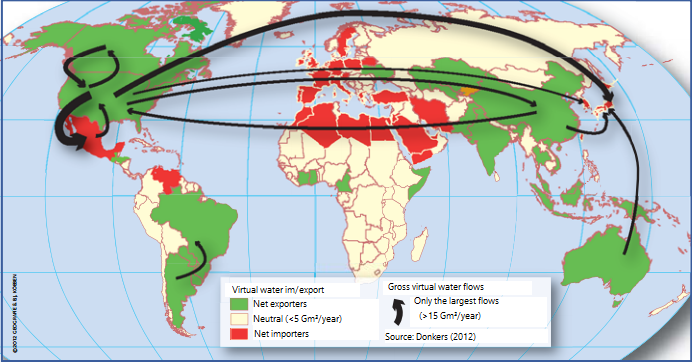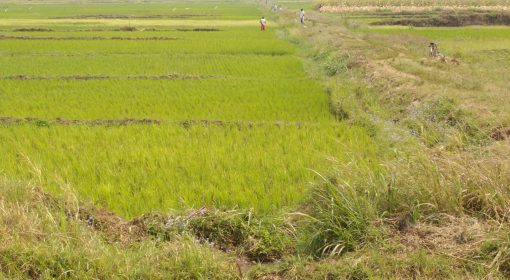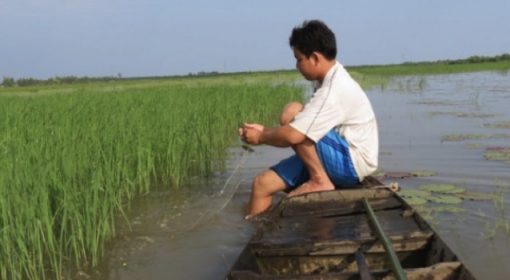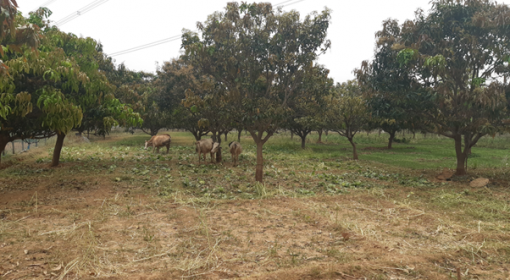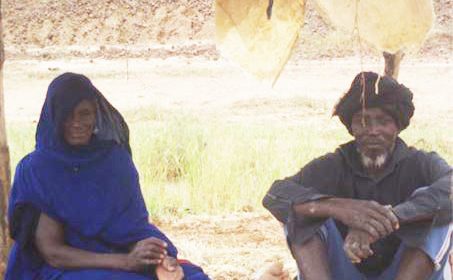By Kim Hoeks
March 6, 2015

Images: WikiCommons
How much water does it cost to make a t-shirt or a cup of coffee? The concept of the ecological footprint has become a well-known phenomenon, but the water footprint remains fairly unknown. Water scarcity grows immensely as a result of increasing food consumption. It takes one thousand times more water to feed the world than is necessary to still its thirst.
Virtual water
We, as inhabitants of the earth, consume a large amount of water. However, a vast part (98%) of that water is indirectly used for the production of food, industrial products and clothes; so-called virtual water. The concept of virtual water has been introduced by Tony Allen in the 1990s. As an expert in international water conflicts, he was surprised that the growing shortages of water in the Middle East had not yet let to major water wars. A growing population leads to an increasing demand for water. However, these countries could not satisfy their needs on their own. A great amount of the water is caught inside the food that the countries import. According to Allan, more ‘virtual’ water flows from the US and European Union into the Middle East than there is water flowing from the Nile to Egyptian agriculture.
Water for food
Agriculture is the greatest user of freshwater in the world. Especially, the production of cotton, sugar, coffee and grain absorbs loads of water. In addition, flowers, meat and soft drinks are products which also have a high water footprint. The water footprint calculator allows you to calculate the amount of water you use on a yearly basis. Differences in individual water footprints, but also country-wise, are the result of various variables:
- Differences in level of development
If you earn more money, you can buy more products and also more exclusive products which might have a higher water footprint. - Enviromental circumstances
Not every product can be cultivated in all countries. For instance, coffee is largely produced in the global South and consumed in the global North, which leads to trade flows of virtual water. - Agricultural production methods
Some methods of agricultural production need more water than others, for instance because they are heavily irrigated. - Food patterns
It takes more water to produce one kilogram of beef, than one kilogram of vegetables. So vegetarians are more likely to have a lower water footprint.
Virtual water flows
Virtual water trade is an alternative to real water transfers, as have been implemented, for instance, in China and the Southern Africa. Furthermore, countries with large water stock can profit from their abundance by producing water-intensive products for export. The other way around, water-scarce countries should achieve water security by importing water-intensive products instead of producing them domestically which puts more pressure on the water supply. Strikingly, looking at the map above, water-rich European countries belong to the net-water-importer category. These countries import many products that are much cheaper when produced somewhere else or that cannot be cultivated in their own land. In addition water-scarce countries, like China and India, export a lot of their virtual water. Nowadays, water is, not yet, a dominant factor in international trade.
Solutions?
The most obvious measure to reduce the worldwide water footprint is making the usage of water more efficient; using less water to produce a particular product. However, only looking at numbers could lead to the wrong conclusions. For instance, rice which has been produced in the US costs 2344 liter water per kilo and in Thailand the same amount needs 3592 liters. Taking into account your ‘water friendliness’, you would prefer the rice coming from the US. However, this rice is cultivated on fields that are irrigated using a lot of water from overexploited rivers and aquifers. On the other hand, in Thailand, rice is mainly cultivated during the wet monsoon season. The load of rainwater is absorbed by the rice fields instead of leading to floods. This comparison shows the importance of region-specific knowledge on geographical circumstances regarding this issue. Finally, countries also need to pay attention to becoming more neutral towards the import and export of virtual water. However, this issue is closely tied to the differences in wages worldwide and relatively low transport costs. Looking at it from this angle, you might say that globalization is draining us…
More information:
Henk Donkers – Virtueel water: Blauw, groen en grijs. Geografie. June 2012 p.35-39 (Dutch)
J.A. Allan (2003) Virtual Water – the Water, Food, and Trade Nexus. Useful Concept or Misleading Metaphor?, Water International, 28:1, 106-113, DOI: 10.1080/02508060.2003.9724812
